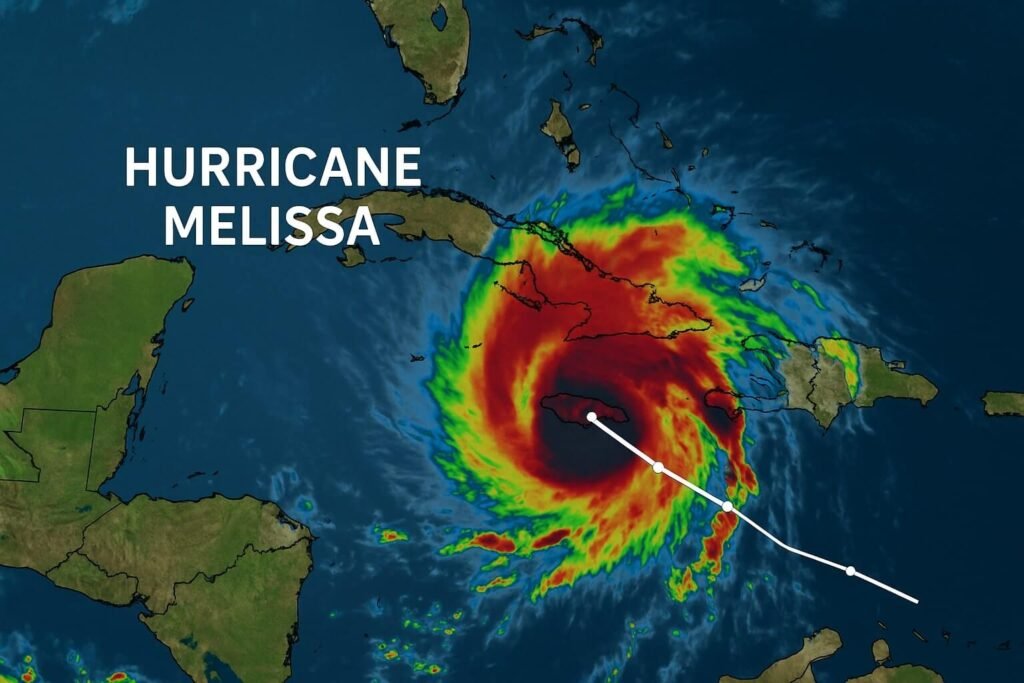When storm Melissa began brewing in the Atlantic, few could predict just how violent and fast it would evolve. But by the time it slammed into Jamaica as a Category 5 hurricane, it had already carved its name into climate history. With dozens dead, homes ripped apart, and entire regions plunged into darkness, this storm wasn’t just powerful, it was a brutal reminder of how climate extremes are no longer the exception, they’re becoming the new normal.
A historic strike on Jamaica’s south coast
On the morning of October 28, Jamaica woke to roaring winds, pounding rain, and a sky that seemed to collapse under the force of storm Melissa. Landfall came with winds at peak Category 5 strength, storm surge reaching heights of 13 feet in places like St. Elizabeth, and up to 30 inches of rainfall turning streets into rivers. Entire districts were swallowed by water, and reports confirmed widespread roof collapses, power failures, and blocked roads. The country’s southern coastline, particularly areas near Black River and Clarendon, bore the brunt of the impact.
Satellite imagery showed the dramatic size and strength of the storm’s eye as it passed directly over heavily populated areas. Homes were flattened, coconut trees snapped like matchsticks, and the island’s electrical grid buckled under the pressure. As the system pushed northward, its outer bands continued lashing the region with heavy rain, triggering landslides and flash flooding that buried hillside communities. Jamaica’s prime minister called the event one of the worst disasters in recent national memory, and early estimates placed over 70 percent of the island without power immediately after landfall.
The death toll in Jamaica alone rose to 19 by October 31. That number is likely to climb as aid teams continue to access cut-off regions. Meanwhile, in Haiti, at least 30 people were reported dead due to landslides and flash flooding, especially in areas where deforestation and steep terrain made the effects even more severe.
What made storm Melissa so dangerous wasn’t just its raw power, it was how quickly it strengthened. Forecasters noted a textbook case of rapid intensification fueled by exceptionally warm waters and low wind shear. This allowed the storm to explode from a tropical disturbance into a Category 5 monster in just a matter of days. By the time official warnings reached some communities, the worst of it was already overhead.
Climate fingerprints and the risk ahead
As relief crews fan out across the Caribbean, scientists and journalists are turning to an even bigger question. Why was storm Melissa so intense, and could it happen again soon?
The short answer is yes, and the longer answer lies in climate science. Research teams have already begun analyzing the data, and their early conclusions are sobering. In a world with warmer oceans, hurricanes like Melissa don’t just become more likely, they become more destructive. Warmer seas supercharge the fuel that hurricanes thrive on, while a wetter atmosphere increases rainfall totals, and slower-moving systems linger longer over vulnerable areas.
A post-storm climate attribution study indicated that Melissa’s rapid intensification and peak wind speeds were significantly amplified by today’s climate conditions. Essentially, what would have once been a Category 3 or 4 hurricane in the 1970s may now tip into Category 5 territory, with all the extra damage that brings. And that damage is not just theoretical. It means hospitals without power, bridges washed out, and thousands of families displaced.
The impact doesn’t end at destruction. In the days after the storm, Jamaica’s health systems came under immense strain. Facilities in the worst-hit areas were partially damaged or cut off, and the loss of clean water supplies created serious public health risks. The Pan American Health Organization reported efforts to stabilize cold-chain supplies for vaccines and deliver mobile clinics to the affected parishes. Vector control and waterborne illness prevention became top priorities.
As of now, major ports and airports have reopened in stages, allowing aid to arrive and foreign nationals to evacuate. But in remote communities along the south coast, access remains a challenge. The need for tarps, clean water, medical supplies, and fuel is urgent. Aid groups have set up temporary shelters in school buildings, and engineers are assessing the structural integrity of key bridges and roads before full transport can resume.
What storm Melissa leaves behind
In the wider Atlantic, storm Melissa has now weakened and transitioned into a post-tropical cyclone, racing toward cooler waters. But for the Caribbean, the real work is only beginning. Jamaica faces an uphill climb to rebuild its homes, repair its electrical grid, and prepare for future storms that may arrive with even greater force.
Bermuda, which faced tropical-storm conditions from Melissa’s outer bands, saw ferry cancellations and school closures, though the island escaped direct hits. In the Bahamas and eastern Cuba, homes were flooded and crops damaged, but early evacuations likely reduced loss of life.
Back in Jamaica, stories of survival are emerging. In one St. Elizabeth neighborhood, a group of neighbors linked arms to cross waist-high floodwaters and rescue an elderly couple trapped in their home. In Clarendon, a woman gave birth in a makeshift shelter lit only by flashlights. These human moments remind us what is truly at stake when nature lashes out with this kind of fury.
But they also highlight resilience. Jamaica has weathered big storms before, including Hurricane Gilbert and Hurricane Ivan. What feels different with storm Melissa is the speed, the intensity, and the way every edge of the disaster seemed dialed up. For locals, climate change isn’t a future threat. It’s what they just lived through, and what they now must recover from.
Global leaders are watching. In the wake of Melissa’s destruction, calls for climate resilience funding and better disaster preparedness have grown louder. Whether through improved building codes, more responsive warning systems, or global climate finance, it’s clear that the Caribbean cannot face the next storm with yesterday’s defenses.
As cleanup continues, one thing is clear. Storm Melissa wasn’t just another hurricane. It was a warning siren, loud and clear, for a region that sits on the frontline of a changing planet.


